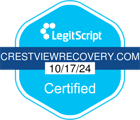Anxiety is a mental health disorder that eclipses an individual’s peace of mind. The loneliness and utter panic a person with anxiety can feel on any given day can literally be breathtaking. This is why medications like Xanax exist. These remedies help those with anxiety or panic disorders feel peace, like they can breathe; sometimes that’s all it takes to function like a real person. Medications like Xanax come in multiple forms – not just pills and capsules. Xanax bars exist and are risky, but useful when utilized with the right method of treatment.
What are Xanax Bars?
Xanax bars are a common slang term for the prescription drug alprazolam; they are known for their high potency and their bar-like shape, which can be broken into smaller doses. As a type of benzodiazepine, Xanax is often prescribed for anxiety and panic disorders. This is because it produces a calming effect by acting on the central nervous system. However, due to the potential for abuse and addiction, it’s crucial that they be used under the strict guidance of a healthcare professional.
What are Benzodiazepines?
Benzodiazepines like Xanax work by enhancing the effects of a neurotransmitter called GABA in the brain. GABA stands for Gamma-Aminobutyric Acid. GABA is responsible for regulating anxiety and stress levels, so when it’s increased, it can induce feelings of relaxation and calmness. This is why Xanax is often prescribed to those with anxiety disorders or panic attacks.
What is Xanax?

Xanax is a prescription medication belonging to the class of drugs called benzodiazepines. It is commonly prescribed to treat anxiety and panic disorders due to its ability to decrease abnormal excitement in the brain. As a potent central nervous system depressant, Xanax works by enhancing the effects of a natural chemical in the body (GABA). As previously mentioned, GABA plays a role in calming a person down. It is worth mentioning that Xanax has the potential for abuse, as does any benzodiazepine. This is why it is imperative to only use Xanax under the watchful eye of a healthcare professional.
Xanax is a fast-acting benzodiazepine commonly prescribed for anxiety or panic disorders. Its effects can typically be felt within 30 minutes to an hour of oral ingestion. This is why it is often used for acute management of anxiety episodes. However, the onset time can vary based on several factors. These factors can include the individual’s metabolism, the dosage taken, and whether it’s taken on an empty stomach.
While Xanax can provide quick relief from symptoms of anxiety, it is not a long-term solution. It is typically prescribed for short-term use; it can be habit-forming and may lead to dependence or addiction if taken for extended periods. Additionally, higher doses of Xanax can cause memory impairment and drowsiness. Because of this, it is imperative to follow the prescribed dosage and avoid alcohol while taking the medication.
Aside from its potential for dependence and side effects, there are also certain precautions to take when using Xanax. It is important to disclose any current medications or supplements being taken to a doctor. Additionally, it is important to disclose any previous history of drug abuse or mental health conditions before starting Xanax.
Xanax is primarily used to treat anxiety and panic disorders. On average, the effects of Xanax can be felt within one hour, with the peak effects typically occurring within 1 to 2 hours for most individuals. The drug has a half-life of about 11 hours in healthy adults, meaning that it takes approximately 11 hours for the average person’s body to eliminate half of the dose. However, the duration of its effects can vary based on several factors, including the individual’s metabolism, age, weight, and overall health. It is crucial to follow a healthcare provider’s guidance regarding dosage and duration of use, as Xanax can be habit-forming and may lead to dependence if misused.
How are Xanax Bars Used?
Xanax bars, a form of the prescription medication alprazolam, are primarily used as a treatment for anxiety and panic disorders. It’s crucial that these bars are taken under the guidance of a healthcare professional; they can pose the risk of dependency and other side effects.
What are Xanax Bars Used for?

Xanax bars are commonly prescribed by doctors due to their high effectiveness in treating anxiety and panic disorders. However, it’s important to note that they can also be misused for recreational purposes due to their sedative effects. This is why it’s crucial for patients to follow the prescribed dosage and not take more than recommended without consulting a doctor first.
In addition to treating anxiety and panic disorders, Xanax bars may also be used in combination with other medications to treat depression, insomnia, and other conditions. Patients should always inform their doctor of any other medications they are taking to avoid potential interactions or adverse effects. It’s also important to mention that Xanax bars can have a calming effect on the body, which can make them highly addictive if not taken as prescribed. It’s essential for patients to follow their doctor’s instructions carefully and not exceed the recommended dosage.
Why Should Someone Use Xanax Bars Instead of Xanax in Pill Form?
Xanax bars, a form of alprazolam, tend to be a more potent option for those who require a higher dosage to manage their anxiety or panic disorders. The bar form allows for the medication to be easily broken into smaller doses if needed. While other forms of alprazolam are available, such as tablets or extended-release capsules, Xanax bars are the most commonly used due to their higher potency. This means that individuals may require smaller doses of Xanax bars compared to other forms of alprazolam. However, it’s important to note that with increased potency comes an increased risk for misuse and addiction.
How Many Milligrams are in a Xanax Bar?
Typically, a Xanax bar contains 2 milligrams of the active ingredient alprazolam. This dosage form is quite potent and is designed to be broken into smaller pieces if a lesser dose is required; in certain cases, a lower dose may be required for treatment. The usage of Xanax bars is typically recommended for short-term treatment of anxiety and panic disorders. It’s crucial to follow a healthcare provider’s prescription and guidance when using medication of this nature due to the risk of dependency and other side effects.
What are the Risk Factors of Xanax?
Xanax carries several risk factors that must be considered. It has the potential for dependence and tolerance; this means over time, a person may require higher doses to achieve the same effect. Withdrawal symptoms can occur when the medication is discontinued. There is also a risk of adverse reactions when mixed with other substances, particularly alcohol or opioids. Additionally, pregnant women and individuals with a history of substance abuse may face increased risks when using this medication. It’s crucial for patients to use Xanax under the guidance of a healthcare professional to mitigate these risks.
How is Xanax Abused?
Xanax is commonly prescribed for anxiety and panic disorders but it may be misused for its sedative effects. Abuse can take many forms, including taking higher doses than prescribed, using it without a prescription, or consuming it through non-prescribed methods such as crushing and snorting the pills to intensify the drug’s effects. This misuse can lead to addiction, overdoses, and severe health consequences such as respiratory failure, coma, and even death.
Signs and symptoms of Xanax abuse may include excessive sedation, cognitive impairment, and altered judgment. Individuals may also exhibit slurred speech, coordination problems, and develop a tolerance requiring increased dosages to achieve the same effect. In severe cases, Xanax abuse can lead to mood swings, irritability, or even aggressive behavior. It’s important to be aware of these signs to intervene appropriately and seek professional help if Xanax abuse is suspected.
Treatment options for Xanax abuse generally involve a combination of medically supervised detox, cognitive-behavioral therapy, and counseling. Detox allows the body to rid itself of the drug under medical supervision, which is crucial due to potential withdrawal symptoms. Cognitive-behavioral therapy helps individuals identify and change destructive thought patterns and behaviors related to substance use; counseling provides support and strategies for coping with cravings and avoiding relapse. Additionally, support groups and aftercare programs can offer ongoing community support.
Crestview Recovery Can Help with Xanax Addiction

Crestview Recovery understands the complexities of Xanax addiction and offers a comprehensive approach to help individuals overcome dependency. With a blend of individual therapy, group support, and holistic treatments, Crestview provides the personalized care essential for long-term recovery.
We know that overcoming addiction is not a one-size-fits-all solution. That’s why our approach to treating Xanax addiction incorporates various methods to address each individual’s unique needs. Our team of experienced professionals works together to develop personalized treatment plans that cater to the individual’s physical, mental, and emotional well-being.
If you or a loved one would like to find out more about what we do, you can contact us here.
































